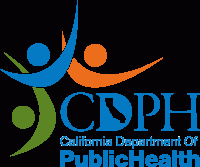Bearing through four voluntarily recalls in the first two months since the transition window ended, the California cannabis industry showed its commitment to providing safe goods for its consumers. Recalls are considered the removal of products deemed unsafe at the point of retail. With unsafe product already on shelves, it is that much more important to have a thought out strategy if a recall need arises. Currently, the California Department of Public Health-Manufactured Cannabis Safety Branch is the only regulatory agency in the state of California with recall stipulations for California cannabis companies. Thus, the onus is on individual cannabis companies to initiate their own recall plans.
 Why establish a recall plan if one is not compulsory? To start, a cannabis product recall is more challenging than recalls in other industries because of the classification as a Schedule 1 drug and the misunderstanding and stigma of the drug that promotes fake news. These considerations affect the way both the government officials and consumers perceive cannabis recalls – not preparing ahead of time could be devastating to your brand. Furthermore, a recall is not just a one day headache – in December 2017, the Inspector General of Department of Health and Human Services found that food companies took 57 days on average to initiate a recall after the Food and Drug Administration (FDA) first learned a product was potentially hazardous. Not only is a recall tricky to navigate and time intensive, a recall can also be costly – a joint study by the Food Marketing Institute (FMI) and the Grocery Manufacturers’ Association (GMA) in the USA found that 77% of the study respondents estimated the financial impact to be up to $30 million dollars; 23% reported even higher costs. One major factor of the financial impact to consider is that many retailers do not remove only the affected products, instead sweeping entire lines and brands. To estimate how much a food recall would cost your company, researchers Moises Resende-Filho and Brian Burr developed a model to estimate the direct costs of a food recall. To take a step back, it is true that, while recalls can be tricky to navigate, time intensive and costly, recalls are generally infrequent. At the same time, you never know where or when a recall could happen. For example, your manufacturing process might be flawless, but a supplier may suddenly issue a recall or the retail facility is compromised. Moreover, not all recalls are equal – imagine that consumers would react differently to an undeclared allergen on the label versus a life threatening pathogen in a product distributed to patients with weakened immune systems. Ergo, it is strategic for every cannabis company (grower, manufacturer, retail, etc.) to have a recall plan to be ready for any type of recall situation.
Why establish a recall plan if one is not compulsory? To start, a cannabis product recall is more challenging than recalls in other industries because of the classification as a Schedule 1 drug and the misunderstanding and stigma of the drug that promotes fake news. These considerations affect the way both the government officials and consumers perceive cannabis recalls – not preparing ahead of time could be devastating to your brand. Furthermore, a recall is not just a one day headache – in December 2017, the Inspector General of Department of Health and Human Services found that food companies took 57 days on average to initiate a recall after the Food and Drug Administration (FDA) first learned a product was potentially hazardous. Not only is a recall tricky to navigate and time intensive, a recall can also be costly – a joint study by the Food Marketing Institute (FMI) and the Grocery Manufacturers’ Association (GMA) in the USA found that 77% of the study respondents estimated the financial impact to be up to $30 million dollars; 23% reported even higher costs. One major factor of the financial impact to consider is that many retailers do not remove only the affected products, instead sweeping entire lines and brands. To estimate how much a food recall would cost your company, researchers Moises Resende-Filho and Brian Burr developed a model to estimate the direct costs of a food recall. To take a step back, it is true that, while recalls can be tricky to navigate, time intensive and costly, recalls are generally infrequent. At the same time, you never know where or when a recall could happen. For example, your manufacturing process might be flawless, but a supplier may suddenly issue a recall or the retail facility is compromised. Moreover, not all recalls are equal – imagine that consumers would react differently to an undeclared allergen on the label versus a life threatening pathogen in a product distributed to patients with weakened immune systems. Ergo, it is strategic for every cannabis company (grower, manufacturer, retail, etc.) to have a recall plan to be ready for any type of recall situation.
Take these 6 tips in designing a recall plan:

Before a Recall
1) Be familiar with how recalls work by staying up to date with recalls
- At the federal level, (example here is U.S. Food and Drug Administration)
- At the state level, (example here is California Department of Public Health).
2) Write a recall plan. Select a recall template and fill in your company information, but also take into consideration any regulations on recalls at the federal, state, and county levels.
- Federal and state governments provide templates and other resources (example here is California Department of Public Health).
- Reputable universities also provide dependable information (example here is North Carolina State University).
- Established industry organizations, in cannabis or other similar industries, share resources as well (example here is Grocery Manufacturers Association).
During a Recall
3) Record everything that was said and done. If there was no prewritten recall plan, during a recall is a good time as any to begin documenting all actions and communication – internal within the management team and external with business partners (suppliers, retailers) and external with the consumers.
4) Find the flaw in the product. Why is the product being recalled? This is important to know, whether it was your item or not, to better answer the next question of “What happens with the recalled product?” The most common causes for a recall in the USA are identified in the joint study mentioned above by the FMI and GMA.
After a Recall
5) Reevaluate the recall plan. Compare to a reputable third-party auditing standard (example here is Safe Quality Food Institute’s SQF Food Safety Code for Manufacturing Edition 8). Updates to the recall plan are inevitable and constant. The changes may be due to updates in company products, adjustments in the recall network or the experience gained when going through a recall. Also keep an eye out for updates to templates of recall plans. Conduct mock recalls with different recall origins.
6) Reevaluate the food safety plan. After finding the flaw in the product, identify the flaw in the process and improve. Examples to improve the food safety plan may be to: amend the supplier approval program, refine process flow, polish the sanitation program or revise the preventative maintenance program. The foundation of a recall plan is having a robust food safety plan to minimize the risk of running a recall.



